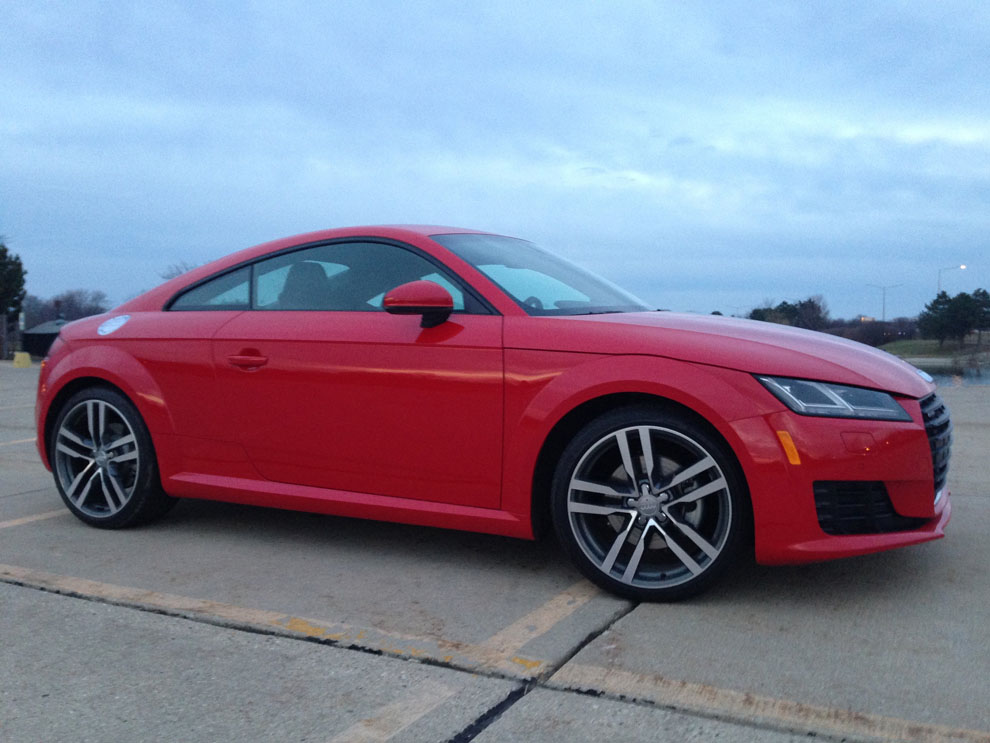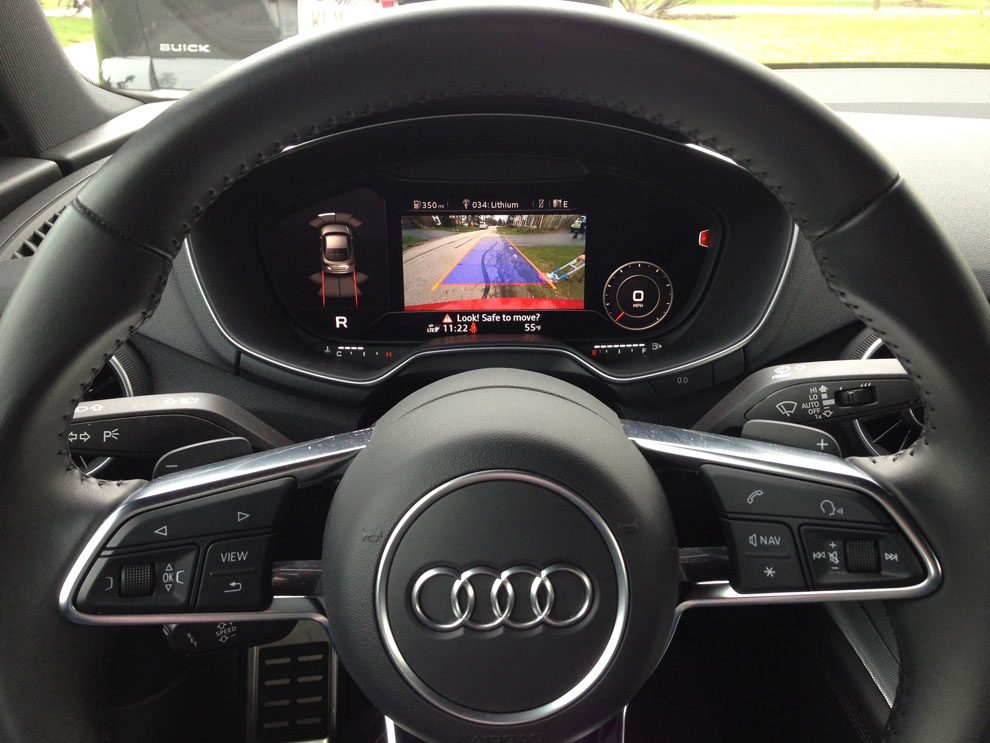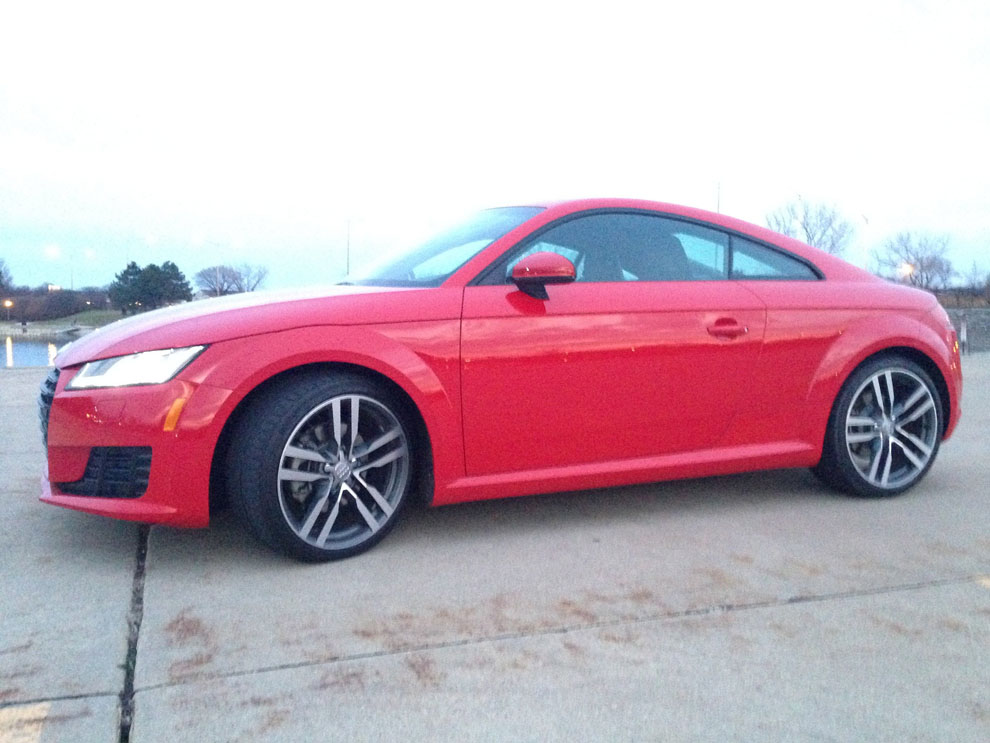The third-generation Audi TT is cute. It’s a coupe that doesn’t have the performance chops to compete with the thoroughbreds of the class, but has enough style to stand out from the herd.
Base price $42,900, ($49,675 as tested) the TT coupe has four seats, unlike the two-seat Roadster, but those rear seats are best used for a four-legged friend or to open up the hatch for more storage than any car in its class. The front and rear are snubbed, the wheelbase pushed to the corners and the windshield is steep, giving the TT a domelike cabin.
But this is no CrossFit Beetle. It looks more like a pocket-size version of Audi’s R8 supercar. It has a low, wide stance with brawny wheel arches that house 19-inch wheels.
Under the hood is a turbocharged four-cylinder engine that makes 220 horsepower and 258 pound-feet of torque. Power goes to all four wheels from a six-speed, dual-clutch transmission known as S tronic that a driver can override with paddle shifters or with the gear stick.
Automatic shifts happen quicker than the flick of a paddle, and different drive modes tell the car how to react in a sharper, more consistent way than a human overlord. Still, you can notch the stick up and down to approximate a manual.
First launched in 1998, the TT is not and has never been a twin turbo (TT is a heritage name honoring the Tourist Trophy race), so there is a brief lag when mashing the chrome pedal. The engine weighs less than its predecessor, but it’s also being shared by the A3 compact, which costs less and is a sedan.
The lighter, sleeker TT has to be faster and it is, hitting 60 mph in 5.3 seconds, according to Audi.
For speed, try the TT RS, expected to be unveiled later this year.
Enthusiasts might clamor for the rear-wheel-drive rawness of the Corvette’s 6.2-liter V-8, or the peerless handling of a mid-engine Porsche, such as the (slightly more expensive) Cayman.
The TT appeals to drivers who appreciate bursts of speed but not at the expense of style, comfort, safety and all-around user-friendliness. It doesn’t require a certain bravado or set of skills, it’s not going be challenged off the line by a teen whose expertise comes from his dad’s car magazines, and it won’t carry the club membership of the more venerated or exceptional sports cars.
It stands out on the inside. There is no center stack, no climate or radio interface, no screen that emerges from the dash as in other Audis. The bare dash is a spartan canvas of beauty.
Yet creature comforts aren’t sacrificed, just repackaged. Climate controls are accessed through a button in the center of each of the three vents in the center of the dash. The buttons are unnoticeable if it’s off. Press one and the temp gauge comes on; another button controls the function.
Everything else is controlled through a 12.3-inch dynamic display with 3-D graphics that Audi calls “virtual cockpit.”
It replaces the static gauges of old with a customizable vehicle information display that houses everything from radio presets to a backup camera, right where the speedometer had been. The $3,200 technology package includes Navigation Plus, which features a crystal-clear map in satellite or traffic form.
Redundant steering wheel controls let the thumbs do the controlling, but there is also the MMI (multimedia interface) dial and four toggles on the center console to take a deeper dive.
Send questions/comments to the editors.





Success. Please wait for the page to reload. If the page does not reload within 5 seconds, please refresh the page.
Enter your email and password to access comments.
Hi, to comment on stories you must . This profile is in addition to your subscription and website login.
Already have a commenting profile? .
Invalid username/password.
Please check your email to confirm and complete your registration.
Only subscribers are eligible to post comments. Please subscribe or login first for digital access. Here’s why.
Use the form below to reset your password. When you've submitted your account email, we will send an email with a reset code.